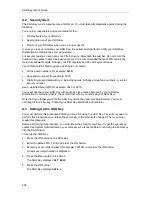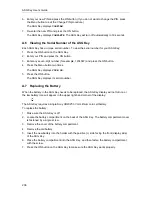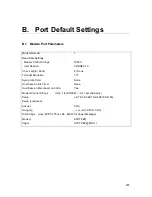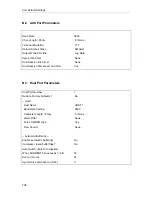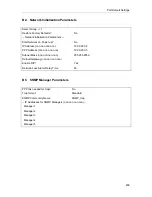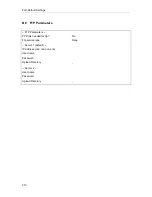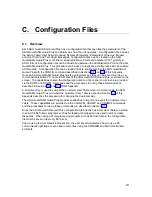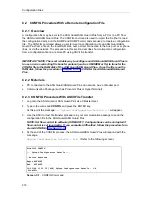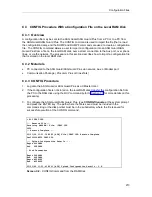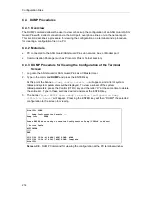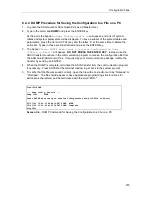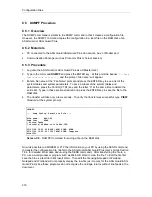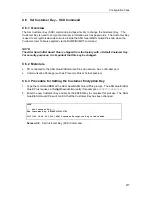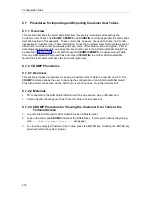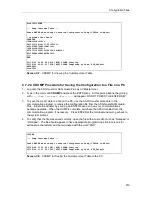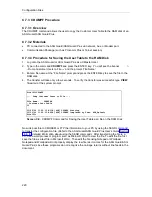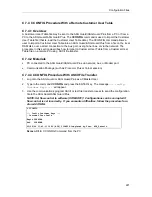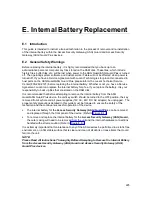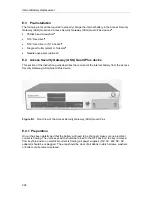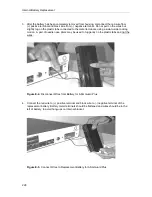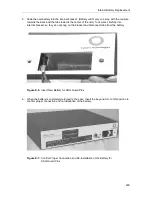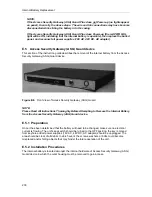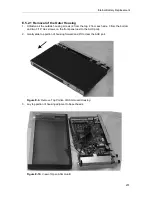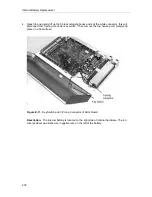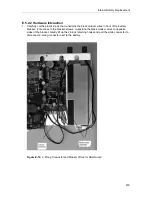
Configuration Files
218
C.7 Procedures for Importing and Exporting Customer User Tables
C.7.1 Overview
This section describes the commands that allow for securely importing and exporting the
Customer User Table. The CDUMP, CDUMPF and CCONFIG commands parallel the commands
described earlier in this appendix. These commands, however, are used to ‘dump’ and ‘config’
(respectively) Customer User Table information. Since the Customer User Table contains secret
information, such as a user passwords and keys, some of this data must be encrypted. Prior to
importing/exporting this data, an encryption key must be set in the ASG Guard/ASG Guard Plus
as detailed in Section C.6. To successfully export (CDUMP/CDUMPF) a Customer User Table
from one ASG Guard/ASG Guard Plus and import (CCONFIG) to another ASG Guard/ASG
Guard Plus, both units must have the same encryption key.
C.7.2 CDUMP Procedures
C.7.2.1 Overview
This section provides a procedure for saving a Customer User Table to a text file on a PC. The
CDUMP command allows the user to back up the configuration of an ASG Guard/ASG Guard
Plus with a direct connection via the AUX port, over phone lines, or via the network port.
C.7.2.2 Materials
•
PC connected to the ASG Guard/ASG Guard Plus via network, Aux, or Modem port.
•
Communication Package (such as Procomm Plus or Telnet session)
C.7.2.3 CDUMP Procedure for Viewing the Customer User Table at the
Terminal Screen
1.
Log onto the ASG Guard or ASG Guard Plus as a CMaster User.
2. Type in the command CDUMP and press the ENTER key. At this point a banner beginning
with
--- Dump Customer Users ---
will appear.
3. To view the encrypted Customer User Table, press the ENTER key. Pressing the ENTER key
again will return the system prompt.
Summary of Contents for Lucent Technologies Access Security Gateway Guard
Page 12: ...x Page intentionally left blank ...
Page 28: ...ASG Guard Overview 16 Page intentionally left blank ...
Page 36: ...Physical Connections 24 Page intentionally left blank ...
Page 60: ...Modem Port Setup 48 Page intentionally left blank ...
Page 82: ...Modifying the User Database 70 Page intentionally left blank ...
Page 120: ...Action and Event Tables 108 Page intentionally left blank ...
Page 158: ...User Connectivity 146 Page intentionally left blank ...
Page 188: ...Log Functions 176 Page intentionally left blank ...
Page 236: ...Troubleshooting 224 Page intentionally left blank ...
Page 252: ...Internal Battery Replacement 240 Page intentionally left blank ...
Page 258: ...Glossary of Command References 246 Page intentionally left blank ...

